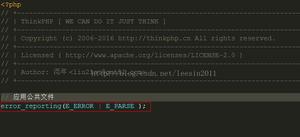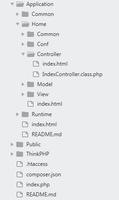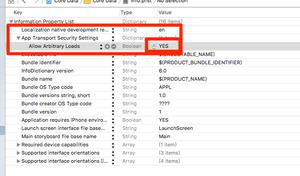Vue.js使用-http请求 - 迪米特

Vue.js使用-http请求
Vue.js使用-ajax使用
1.为什么要使用ajax
前面的例子,使用的是本地模拟数据,通过ajax请求服务器数据。
2.使用jquery的ajax库示例
new Vue({ el: \'#app\',
data: {
searchQuery: \'\',
columns: [{name: \'name\', iskey: true}, {name: \'age\'},{name: \'sex\', dataSource:[\'Male\', \'Female\']}],
peoples: []
},
ready: function () {
this.getPeoples();
},
methods: {
getPeoples: function () {
var vm = this;
$.ajax({
url: \'http://localhost:20000/my_test\',
type: \'get\',
dataType: \'json\',
success: function (data) {
vm.$set(\'peoples\', data.result);
},
error: function(xhr, errorType, error) {
alert(\'Ajax request error, errorType: \' + errorType + \', error: \' + error)
}
});
}
}
})
3.vue-resource库
vue是基于数据驱动的,不需要直接操作DOM,因此没有必要引入jquery
vue提供了一款轻量的http请求库,vue-resource
vue-resource除了提供http请求外,还提供了inteceptor拦截器功能,在访问前,访问后,做处理。
4.vue-resource语法-使用$http对象
// 基于全局Vue对象使用httpVue.http.get(\'/someUrl\',[options]).then(successCallback, errorCallback);
Vue.http.post(\'/someUrl\',[body],[options]).then(successCallback, errorCallback);
// 在一个Vue实例内使用$http
this.$http.get(\'/someUrl\',[options]).then(sucessCallback, errorCallback);
this.$http.post(\'/someUrl\',[body],[options]).then(successCallback, errorCallback);
then方法的回调函数写法有两种,第一种是传统的函数写法,第二种是更简洁的Lambda表达式写法。
//传统写法this.$http.get(\'/someUrl\',[options]).then(function(response){
//响应成功回调
},function(response){
//响应错误回调
});
//Lambda写法
this.$http.get(\'someUrl\',[options]).then((response)=>{
//响应成功回调
},(response)=>{
//响应错误回调
});
5.vue-resource示例
<script src="js/vue-resource.js"></script><script>
new Vue({
el: \'#app\',
data: {
searchQuery: \'\',
columns: [{name: \'name\', iskey: true}, {name: \'age\'},{name: \'sex\', dataSource:[\'Male\', \'Female\']}],
peoples: []
},
ready: function () {
this.getPeoples();
},
methods: {
getPeoples: function () {
var vm = this;
vm.$http.get(\'http://localhost:20000/my_test\').then(
function (data) {
var newdata = JSON.parse(data.body)
vm.$set(\'peoples\', newdata.result)
}).catch(function (response) {
console.log(response)
})
}
}
})
</script>
6.vue-resource用法-使用$resource对象
除了使用$http对象访问http,还可以使用$resource对象来访问。
resource服务默认提供以下几种action:
get:{method: \'GET\'},
save:{method: \'POST\'},
query:{method: \'GET\'},
update:{method: \'PUT\'},
remove:{method: \'DELETE\'},
delete:{method: \'DELETE\'},
resource对象使用示例如下:
new Vue({ el: \'#app\',
data: {
searchQuery: \'\',
columns: [{name: \'name\', iskey: true}, {name: \'age\'},{name: \'sex\', dataSource:[\'Male\', \'Female\']}],
peoples: []
},
ready: function () {
this.getPeoples();
},
methods: {
getPeoples: function () {
var vm = this;
var resource = this.$resource(\'http://localhost:20000/my_test\')
resource.get().then(
function (data) {
var newdata = JSON.parse(data.body)
vm.$set(\'peoples\', newdata.result)
}).catch(function (response) {
console.log(response)
})
}
}
})
7.拦截器interceptor
语法如下:
Vue.http.interceptors.push(function(request, next){ //...
//请求发送前的处理逻辑
//...
next(function(response){
//...
//请求发送后的处理逻辑
//...
//根据请求的状态,response参数会返回给successCallback或errorCallback
return response
})
})
8.拦截器interceptor使用示例
<div id="help"> <loading v-show="showLoading"></loading>
</div>
<template id="loading-template">
<div class="loading-overlay">
<div class="sk-three-bounce">
<div class="sk-child sk-bounce1"></div>
<div class="sk-child sk-bounce2"></div>
<div class="sk-child sk-bounce3"></div>
</div>
</div>
</template>
<script>
var help = new Vue({
el: \'#help\',
data: {
showLoading: false
},
components: {
\'loading\': {
template: \'#loading-template\'
}
}
})
Vue.http.interceptors.push(function(request, next){
help.showLoading = true
next(function (response) {
help.showLoading = false
return response
})
})
</script>
9.vue-resource的优点
vue-resource比jquery轻量,可以使用Vue.http或者Vue.resource处理HTTP请求,两者没有什么区别。
另外可以是用interceptor在请求前和请求后附加一些行为。
以上是 Vue.js使用-http请求 - 迪米特 的全部内容, 来源链接: utcz.com/z/379463.html









